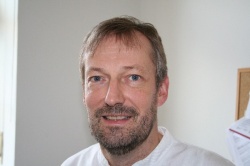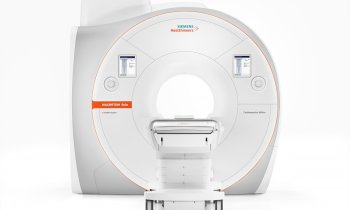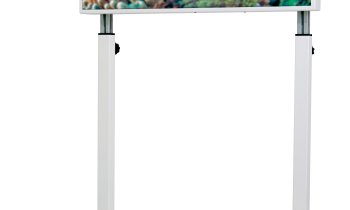CIED patients can have MRI examinations
A new generation of cardiovascular implantable electronic devices (CIEDs) includes the Implantable Cardioverter Defibrillator (ICD), Cardiac Resynchronisation Therapy Defibrillator (CRT-Ds) and Cardiac Resynchronisation Therapy Pacemakers (CRT-Ps). Professor W R Bauer at University Hospital Würzburg has been significantly involved in their development, EH Editor Ralf Mateblowski to ask him about their value in terms of MRI use.


The high frequency fields of the MRI scanner are the biggest problem, explained Professor Bauer. ‘The electrodes act like antennae, receiving the ultra-short waves and transmitting them to the cardiac tissue. This can lead to overheating and dysrhythmia, and the equipment can also become damaged.
‘In our hospital we’ve been looking into this problem and into further developments of this technology since 2003. However – and this is important to me – we’ve carried out fundamental research rather than industrial research. For instance, we spent a lot of time and did an endless series of measurements trying to identify the centres in the MRI scanner that are dangerous for patients with pacemakers. We worked out solutions that have been integrated into the configuration of the new electrodes and equipment.’
What prospects does that present?
‘The indications for MRI examinations are becoming dramatically more important: MRI scanning is now the imaging procedure with the best soft tissue contrast. It allows functional examinations, is unsurpassed for neurological examinations and for heart and abdominal examinations. Add to this the fact that patients are living longer and longer, which increases the probability of them needing an MRI examination at some stage. This affects around three quarters of patients with these devices who, due to the problems mentioned, were previously excluded from MRI examinations.‘
Will some patients still be excluded from MRI exams and are there limitations when dealing with the new CIEDs?
‘No, there are no differences to previous solutions regarding handling and features. No adjustments are needed for the implantation, and diagnosis and therapy are not limited – to the contrary. ‘There are a few unspectacular exclusion criteria -- patients with MRI compatible systems need to be of a certain height and must not be suffering a high fever. The implant should have been in place for six weeks before the first examination, the field strength should be 1.5 Tesla.’
Conversely, would it make sense to exchange CIEDs that are not compatible with MRI before their expected life span ends?
‘No. If somebody has a system implanted that works well, I would definitely not exchange it. Taking a new aggregate and connecting it to the old electrodes is not enough because the system as a whole would still not be MRI compatible. The only alternative would be to exchange the electrodes and aggregate before time, but I would advise against this.’
What else is important regarding, for instance, cooperation with radiologists?
‘The most important basis for good cooperation is to work as a wellrehearsed team. When radiologists carry out MRI examinations a cardiology team should always be involved in the process, also for the pre-selection of patients. Moreover, cardiologists have the competency when it comes to pacemakers and defibrillators and last, but not least, patients should obviously be looked after by a cardiologist during the examination.’
What is your conclusion regarding the future management of dysrhythmias with MRI compatible CIEDs?
‘The new devices are definitely a milestone for cardiology. They link the best, most modern imaging procedure with a growing group of people in need of this technology: The number of patients wearing an ICD or CRT is strongly on the increase. Now we can also help these patients thanks to innovative technology.’
With doctorates in medicine and physics, Professor Wolfgang Rudolf Bauer is a consultant at the Centre for Internal Medicine, Medical Clinic I, University Hospital Würzburg, where heads the MRI and Clinical Electrophysiology Department. Beyond patient care, the cardiologist’s interests lie in fundamental research into MRI imaging, as seen in the Collaborative Research Centre 688 ‘Mechanisms and imaging of cardiovascular cell-cellinteractions’, as well as in his work as head of the Cardiac MRI and Biophysics research group and the working group with the same name based at the Comprehensive Heart Failure Centre.
25.08.2012











